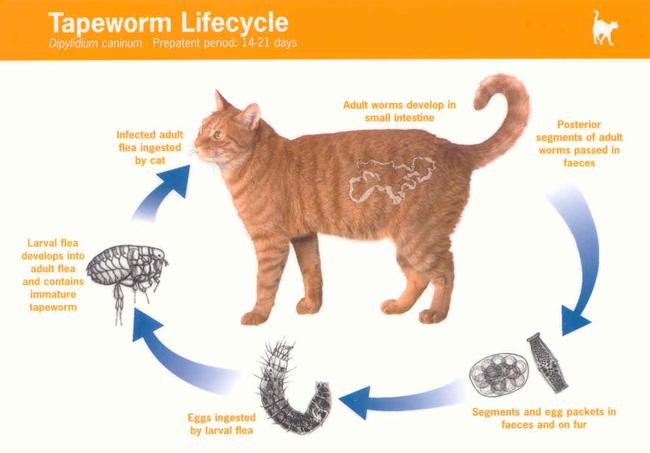You asked: Why are tapeworms not typically found in fecal testing?
Our primary care team member, Dr. Boone, has responded:
The adult tapeworm lives in the small intestine of dogs or cats and usually measures 6 inches in length or more. The tapeworm’s body is made up of several tiny segments – a head, a neck, and many tail segments (proglottids). These tail segments are filled with tapeworm eggs and are the size of a grain of rice. These segments are passed from the pet in either their stool or on their rear end and released into the environment. Since the eggs are passed in these segments, they are not uniformly distributed throughout the feces.
A routine fecal test is done via fecal floatation. This is where the parasite eggs float to the top of a solution and stick to a microscope slide. If the tail segment does break open, the tapeworm eggs generally do not consistently float and often do not show up on the fecal exam.
How do you know if your dog or cat has them? Consider that your pet has tapeworms if you see segments under the tail, around the anus, or in the feces. Segments can be passed in small groups connected to each other but often dry up and look more like a sesame seed.
The flea is the most common intermediate host in dogs and cats. For more information on cyclophllidean tapeworms, go here: https://www.capcvet.org/capc-recommendations/cyclophyllidean-tapeworms.

Dr. Boone graduated from Tuskegee University and joined Friendship in 2004, where she completed her internship in 2005 and has been a staff doctor ever since. Dr. Boone has a special interest in small animal surgery and preventative medicine.
* Featured image courtesy of All Creatures Vet.

